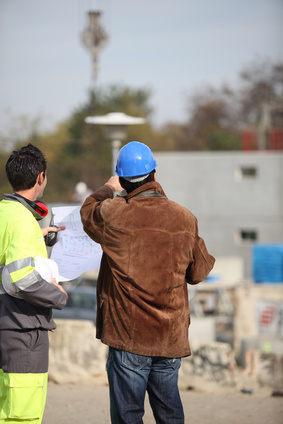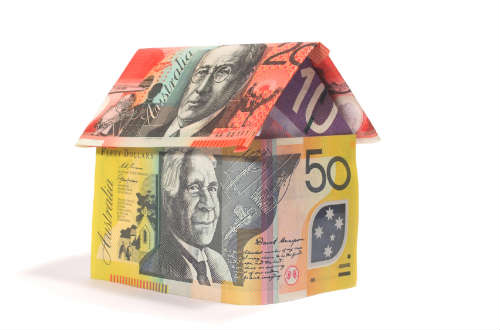Quantity Surveying – Who or What is a Quantity Surveyor?
Quantity Surveying
Someone to Count the Costs!
As property investors we are always on the look out for ways of maximising our investing dollar.
In this article I’ll show you how to potentially access a write down from an existing building using the services of a little know professional that could save you thousands of dollars off your tax bill.
Who or What is a Quantity Surveyor?
There are many consultants that can help you to find, buy and harvest your property investment. Some, like real estate agents, rental managers and mortgage brokers are well known. But others, such as quantity surveyors remain a relative secret.

The Australian Institute of Quantity Surveyors defines the role of a quantity surveyor as “estimat[ing] and monitor[ing] construction costs, from the feasibility stage of a project through to the completion of the construction period. After construction they may be involved with tax depreciation schedules, replacement cost estimation for insurance purposes and, if necessary, mediation and arbitration.” (Source: http://www.aiqs.com.au/)
When a Write-Down Can be Turned Into Profit
I’m always interested in ways to legally minimise my income tax bill.
And as a property investor I know that I am able to claim a tax deduction for the wear and tear of the fixtures and fittings that are in my rental property, such as new carpet, curtains and light fittings.
But what is lesser known is that you can use the services of a quantity surveyor to review and inspect a pre-existing property to prepare a report that estimates the allowable depreciation and capital works that can be claimed for tax purposes.
In some cases the extra depreciation that can be claimed may amount to several thousand dollars per annum, which is a substantial tax saving for simply taking advantage of the services of a lesser-known consultant!
There are two types of taxation deductions that are potentially available to property investors they are:
1. Depreciation tax deductions
You can generally claim a tax deduction for depreciation associated with the fixtures and fittings in your investment property.
Depreciation is an accounting term used to describe the gradual wear and tear of your building caused by the tenants and through the general passage of time.
For example, the paint may fade, the carpet becomes stained and worn, curtains rip and tear, cracks in the walls appear, floorboards start to creak, light fittings become dated etc.
Depreciation is a non-cash expense. What accountants try to do is match the rent you receive with the cost of earning that income, irrespective of what cash is physically paid (this is called an ‘accruals basis’ of accounting).
For example, let’s imagine that you had the following cash income and expense items for your property over a one year period:
Rent Income | $5,200 |
Management Fees | ($260) |
Repairs | ($650) |
Interest | ($2,400) |
Rates | ($1,000) |
Cash Profit | $890 |
The cash income and expenses above ignore the cost of replacing items which need replacing until a repair is needed, at which time you need to pay cash.
Accountants look to smooth out the fluctuations that may occur on the bottom line arising from the uncertainties of repairs by making an annual non-cash depreciation allowance.
The profit and loss for accounting purposes for the same property would be adjusted as follows:
Cash Profit | $890 |
Depreciation Expense | ($385) |
Net Profit | $505 |
The tax department has a split view when it comes to deductions for repairs.
If the repair is a restoration of an item to its prior condition, without changing its character, then a 100% deduction may be claimed.
For example, repainting part of a wall damaged when a child wrote on it would be a repair.
However capital expenses such as substantial improvements, additions, alterations, modernisations and reconstructions are not repairs and must be depreciated at rates set out by the tax office.
For example, repainting a house with a new colour scheme or putting down new carpet would be an improvement or modernisation.
In the profit and loss above, let’s assume that the $1,000 of repairs related to fixing a problem with the hot water service and having an electrician come and correct an electrical fault. These expenses would be classified as a repair.
The depreciation expense of $385 relates to a deduction for the cost of new carpet put down last year and which the Tax Office allows depreciation at the rate of 15% per annum.
Your accountant will be able to help you to determine whether an item is a repair or capital expense and also the appropriate depreciation rate.
2. Capital Works
The second tax deduction of a write-down nature is only available to property investors in strictly limited circumstances and relates to capital works associated with the construction and / or improvement of income producing buildings.
The rules in this area are quite complex, but let’s just say that you may be eligible to claim between 2.5% (ie. write down over 25 years) and 4% (ie. write down over 20 years) of the cost of the building / structural improvement on a straight-line basis.
For example, buying a property built in 1995 having an assessed undeducted construction value of $100,000, would allow the owner to a building write-off of $2,500 per annum until 2020.
As I mentioned, the rules in relation to capital works are complex and I encourage you to seek the advice of an accountant if you believe you are eligible for a deduction.
Because depreciation and capital works write-downs are non-cash items, you are able to gain a tax deduction for money not actually spent.
This is clearly attractive to investors who are looking for tax deductions to minimise the amount of income tax that would otherwise be payable and is certainly a legitimate way to turn write-downs into significant tax savings.
WARNING! Depreciation May Be Harmful To Your Financial Independence!
As mentioned, depreciation benefits are attractive to some property investors because they can reduce or perhaps eliminate your tax bill.
But depreciation can be a dangerous double-edged sword.

If you claim a tax deduction for an allowance for future expenditure but don’t actually spend the money, then in the long-term your property will suffer and the quality of the tenant you attract might be compromised.
It is a false economy to claim a tax deduction and never allocate a cash reserve to fund the renewal of the asset. This is a mistake that Ansett made with its air fleet and only became apparent when new aircraft were needed and there was no money available, despite tax write-downs being claimed for the wear and tear of aircraft in previous years.
I encourage you to view tax deductions for depreciation as a bonus but reaffirm that your property investments must be cashflow positive in their own right – that is, positive cashflow regardless of depreciation benefits.
This is why I don’t personally factor in depreciation benefits into my investing decision, but am happy to claim the available deductions where possible.
Claiming depreciation may save you tax today, but you will cripple your cashflow earning capacity if you don’t ever plan to spend the money tomorrow.
Back to quantity surveyors
For most property investors, the benefit of a quantity surveyor is to have him/her inspect a property that you have purchased and prepare a report substantiating the amount available to claim as depreciation and capital works income tax deductions.
Since you will need to pay a quantity surveyor for his/her report, you must weigh up this cost with the cash-equalivent of the likely additional depreciation benefits. (To see an example of a quantity surveyors report, click here).
As a very general rule of thumb, any un-renovated house older than say eight years will have little depreciation benefit and any structurally unimproved property older than twenty years will have little capital works available.
The Bottom Line

Remember that when you buy a property there are three components that make up the true value:
- The land value
- The building value
- The fixtures and fittings value
In real estate it is safe to conclude that the building and contents depreciate and the land appreciates in value.
But don’t think that just because a building isn’t brand new that you can’t claim potential tax deductions.
A quantity surveyor is an expert who you can include in your team to access depreciation and capital works tax deductions for a pre-existing building in certain circumstances.
But remember that you should always be investing to make money rather than save tax. Look at depreciation benefits as gravy on top but always have the likely cashflow as the primary reason for buying.
Happy investing.
Steve McKnight





Got something to say? Post a comment...
You must be logged in to post a comment.